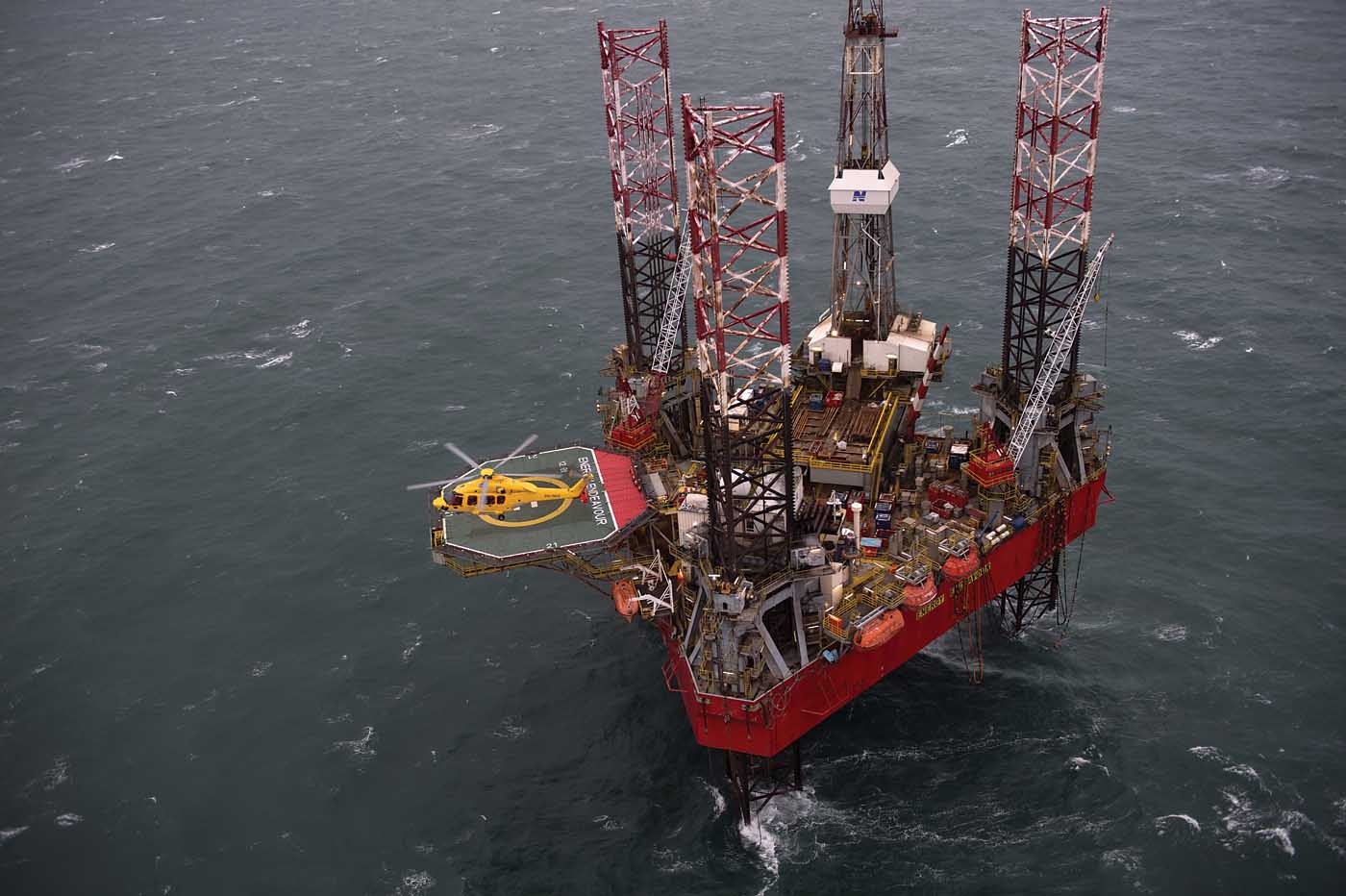Despite a relatively shallow seabed, oil production 120 miles (190 kilometers) from the coast in the infamously treacherous North Sea has always required a technological approach to make it profitable. Right from the beginning of production in the 1960s, helicopters were a part of making it possible.

By 1997, the rotary-wing industry that had developed in support of offshore production was mature and well established, but a small new operator, based in the Belgian coastal city of Oostende, was preparing to shake up the sector. That company was Noordzee Helikopters Vlaanderen (North Sea Helicopters, Flanders) or NHV, established by Eric Van Hal, his brother Jef De Kinder and another investor, with an Airbus Helicopters (then Eurocopter) AS365 N3.
The company grew rapidly over the following years, even as the region’s oil production began to fall. NHV’s operations spanned the coasts of Western Europe (both on- and offshore) and West Africa, but the jewel in the crown remained elusive.
The Scottish city of Aberdeen was transformed perhaps like no other by the oil-and-gas industry. It has the world’s busiest commercial heliport, with 37,000 rotary movements per year that almost exclusively serve offshore oil-and-gas. NHV had opened its U.K. base in the East English coastal town of Norwich in 2008, but without an operation in Aberdeen there was a risk of being overlooked as a serious offshore contender.
“Getting into Aberdeen was difficult as real estate was very expensive,” said Jamie John, NHV’s base manager at Aberdeen. “We couldn’t win any work in Aberdeen without a base there, and we couldn’t get a presence without a contract.”
To get around this chicken and egg situation, NHV took a base in the far north of Scotland and embarked on an effort to build its reputation in the face of the more established names.

“NHV was a player in Europe but little-known in the U.K.,” explained John. “We started operating initially in Wick with a couple of aircraft and that basically got us our name.”
After an 18-year career with the Royal Air Force in ground operations, John spent some time in the Middle East before returning to Europe with DanCopter in 2012, which was acquired by NHV along with the rest of the Blueway Group in 2014. At a stroke, this made the company one of the largest helicopter operators in Europe, with a presence in every oil producing country in the North Sea region.
John explained that things started to change in Aberdeen a year later. “We won a contract with a large major [oil producer] and began gaining momentum,” he said. “In 2015, we were awarded a contract for two aircraft, and we flew our first contracted offshore flight from Aberdeen out of a temporary facility in January 2016 while our base was under construction.”
That operation supported between 150 and 180 flying hours per month with a team of 20 personnel. Now Aberdeen is NHV’s largest flying unit with a fleet of seven aircraft flying 7,000 to 8,000 hours per year and employing 120 staff.
The task
NHV was the launch customer for the H175, and received its 12th of the type in 2019. The Aberdeen fleet would be entirely of that type, which was a departure from the trend.
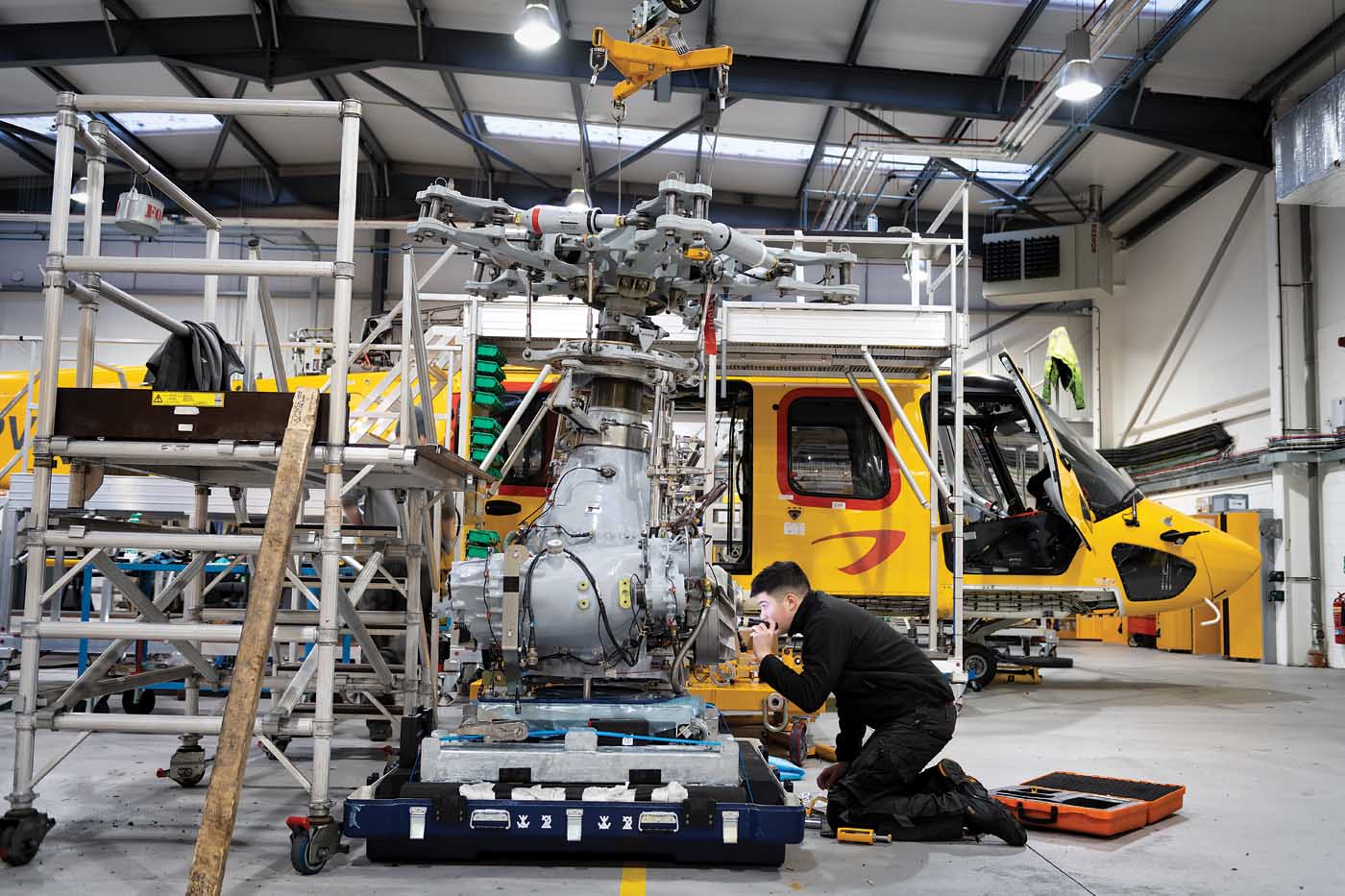
“The [Airbus Helicopters H] 225 and the [Sikorsky] S-92 were still flying, so there was nothing in the medium class flying at Aberdeen,” Neil Christie, the base’s chief pilot, explained.
John was a key part of the team setting up the Aberdeen base, and while contracts have accumulated and the company footprint expanded dramatically since, the nature of the task hasn’t changed much.
“We call them bus schedule contracts,” he explained. “We tend to fly very regular, scheduled runway-to-rig operations that allow predictable working routines.”
It seems likely that oil-and-gas passenger transfers in this environment could only be described as “routine” and “predictable” by someone who has either spent a lot of time in that business, or none at all.
The North Sea spans lines of latitude that are roughly coincident with Alaska, and if the weather is predictable, then it is predictably terrible. High winds and high seas are only generally absent when the thick regional fog known as the Haar blankets the ocean and coast, sending the air temperature plummeting.
Certainly, most of the flights are similar in profile, but when at least one landing and takeoff must be made to a ship, or a platform hundreds of feet above the waves and surrounded by other vertical obstructions, describing them as routine is understated, to say the least.

It is a hazardous environment in which to undertake the already risky business of oil-and-gas production, and there have been several high-profile incidents and accidents that have well illustrated the dangers — including those that led to the lengthy prohibition of EC225 LP and AS332 L2 helicopter operations in the U.K. and Norway.
Unsurprisingly then, safety is at the forefront of everyone’s mind, not just among the aviation community but also those who they transport to their place of work, miles out to sea. Their representatives in the International Association of Oil and Gas Producers (IOGP) take a keen interest in the operation of aircraft that support the industry, and put in place restrictions over and above those of the regional and national aviation regulators.
This emphasis is keenly felt in the cockpit, where responsibility for the safe conduct of flight ultimately rests.
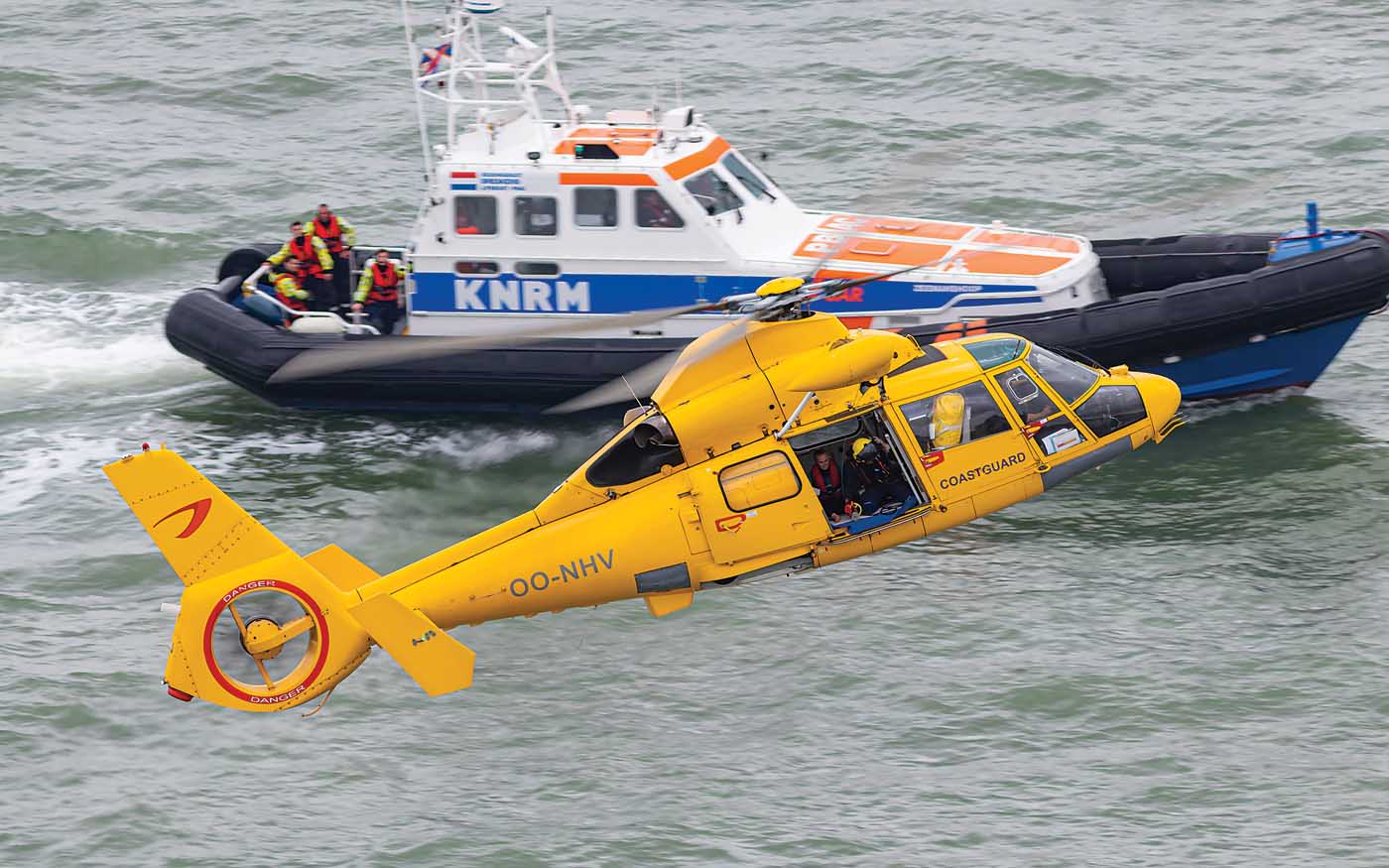
“We want to create the same perfect flight each time, where the passengers can have their nap and aren’t awoken,” said Christie. “How we deal with the weather and anything else needs to be standardized, but we train hard to have that peaceful flight.”
In common with much else in aviation that involves carriage of passengers, that training and standardization revolves around procedure, but oil rigs are very different from international airports — or in fact any airport. While performance-based navigation and even point-in-space approaches have been implemented in other industries, the preferred method to get a large helicopter onto an oil rig involves judicious use of radar. This is not only because of the challenges of the variability of wind direction and strength, but also to aid detection of boats or other obstacles that might have found their way into the path of the approaching aircraft.
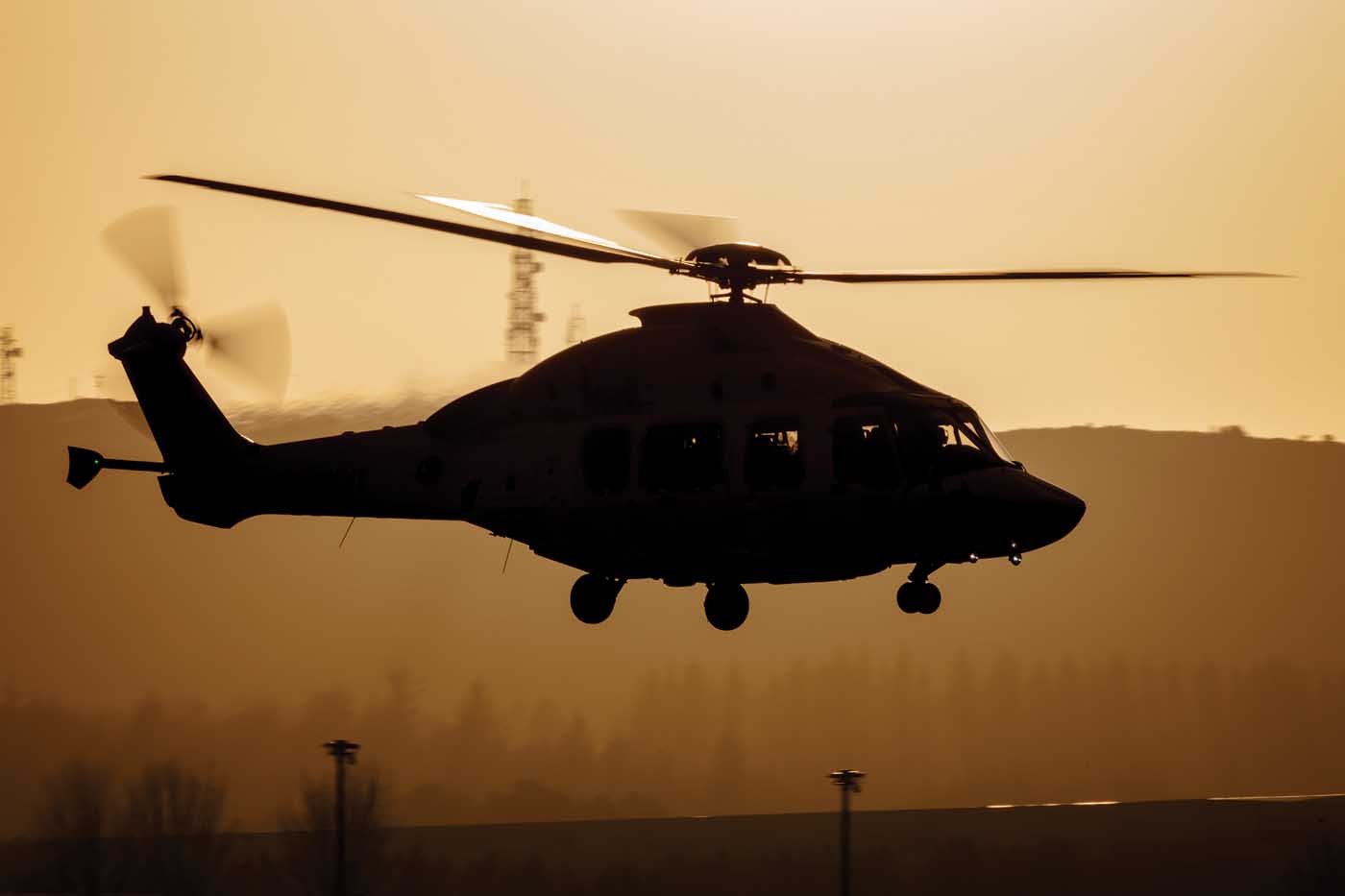
Rig approaches typically start at 1,500 feet (460 meters) above the sea level at 6.5 nautical miles (12 kilometers) and an air speed of 90 knots, before a descent to 200 feet (60 meters) is initiated. A 10 degree turn away from the rig ensures separation before the aircraft continues to a missed approach point at ¼ mile.
Technical advantage
Having flown the AS332 L previously and coming from the H155, Christie was familiar with Airbus Helicopters’ products and design philosophy.
“The H175 came quite naturally; the aircraft simplifies a lot of things,” he explained. “The cockpit is a lot more automated and simplified, which lends to an easier CRM [crew resource management] environment for the crew. That all leads to reducing the risk of confusion or mistakes.”
Christie reserved particular praise for the aircraft’s Automatic Flight Control System (AFCS), native to the H175’s Helionix avionics setup.

“I’ve worked on machines in the past where I had less trust in the AFCS,” he said. “But I’ve heard it again and again from crews that they’ve never had as much trust in another aircraft as they do in the 175.”
At least part of this trust likely comes as a result of the vast array of experience with the aircraft that comes from within the company. NHV has not only been operating the machine for longer than anybody else, but also has the largest fleet anywhere in the world.
Despite having only joined the company in 2019, NHV’s U.K. flight ops manager Chris Cooper is a convert to the type, both technically and ideologically.
“It’s a fantastic aircraft,” he said. “We’ve become the authority on the H175 because we’ve been involved from the very beginning. A lot of the processes and procedures that have been introduced have come from NHV and the experience we have with the aircraft.”
Cooper explained that the variety of landing platforms across the region influenced the company’s fleet choices. The smaller decks off Norwich are well suited to the Leonardo AW139, while NHV has chosen the Leonardo AW169 for the even smaller decks off the coast of Blackpool in northwest England for a new contract with Spirit Energy.
With such a modern fleet, it is easy to see why pilots are attracted to NHV, but Christie and Cooper are equally adamant that the strength of NHV comes from its people.
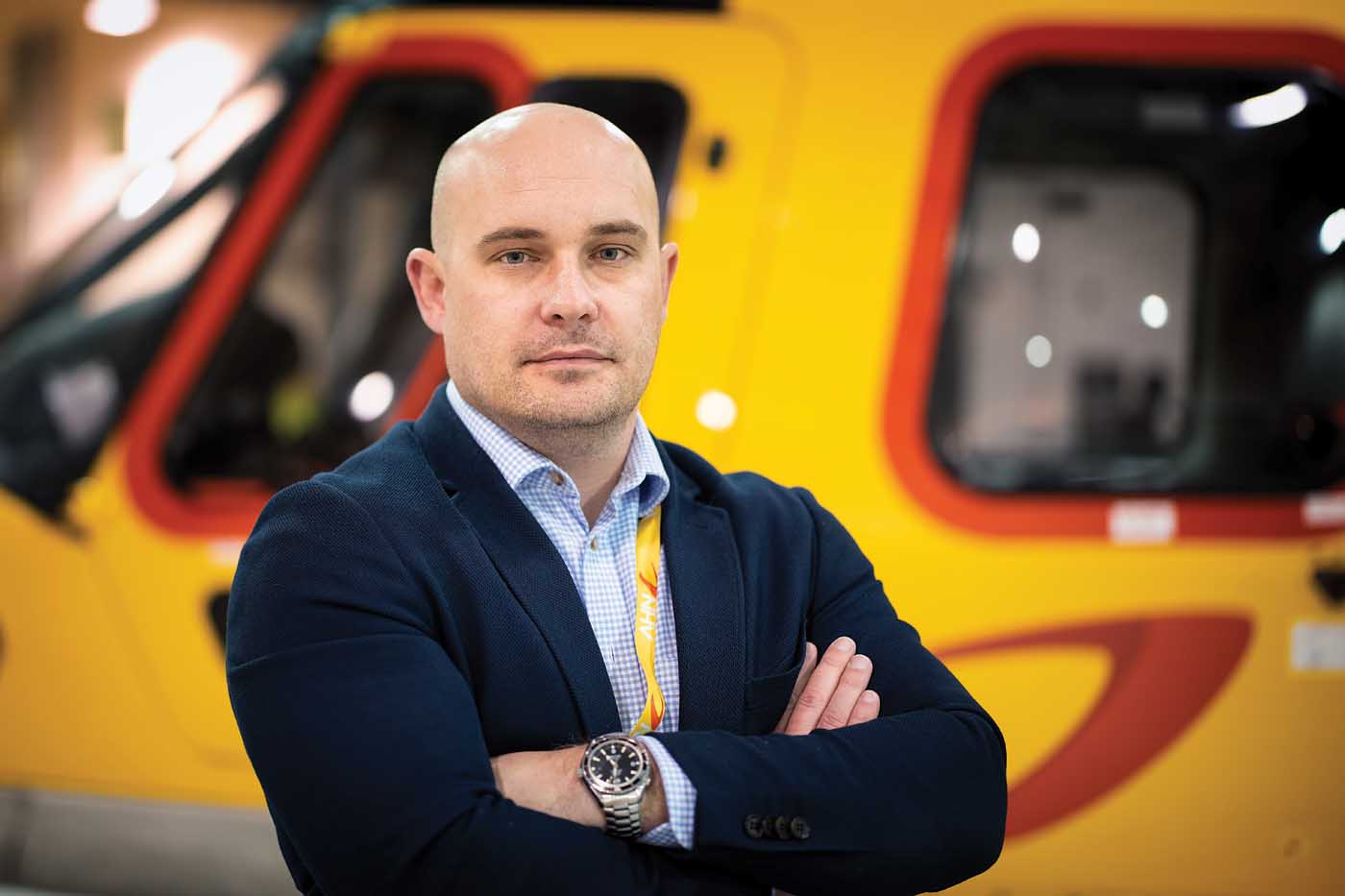
“We are good at selecting the right people,” said Cooper. “We place a big emphasis on that. Obviously, recruits have to have the right technical qualification but with small teams, they also need to have great team skills.”
That experience is getting harder and harder to come by. The IOGP sets out rigorous minimum requirements even for first officers. In particular, the requirement for 500 hours in multi-engine aircraft narrows the field enormously.
NHV is taking some steps towards making the process of working in the sector more achievable for inexperienced pilots.
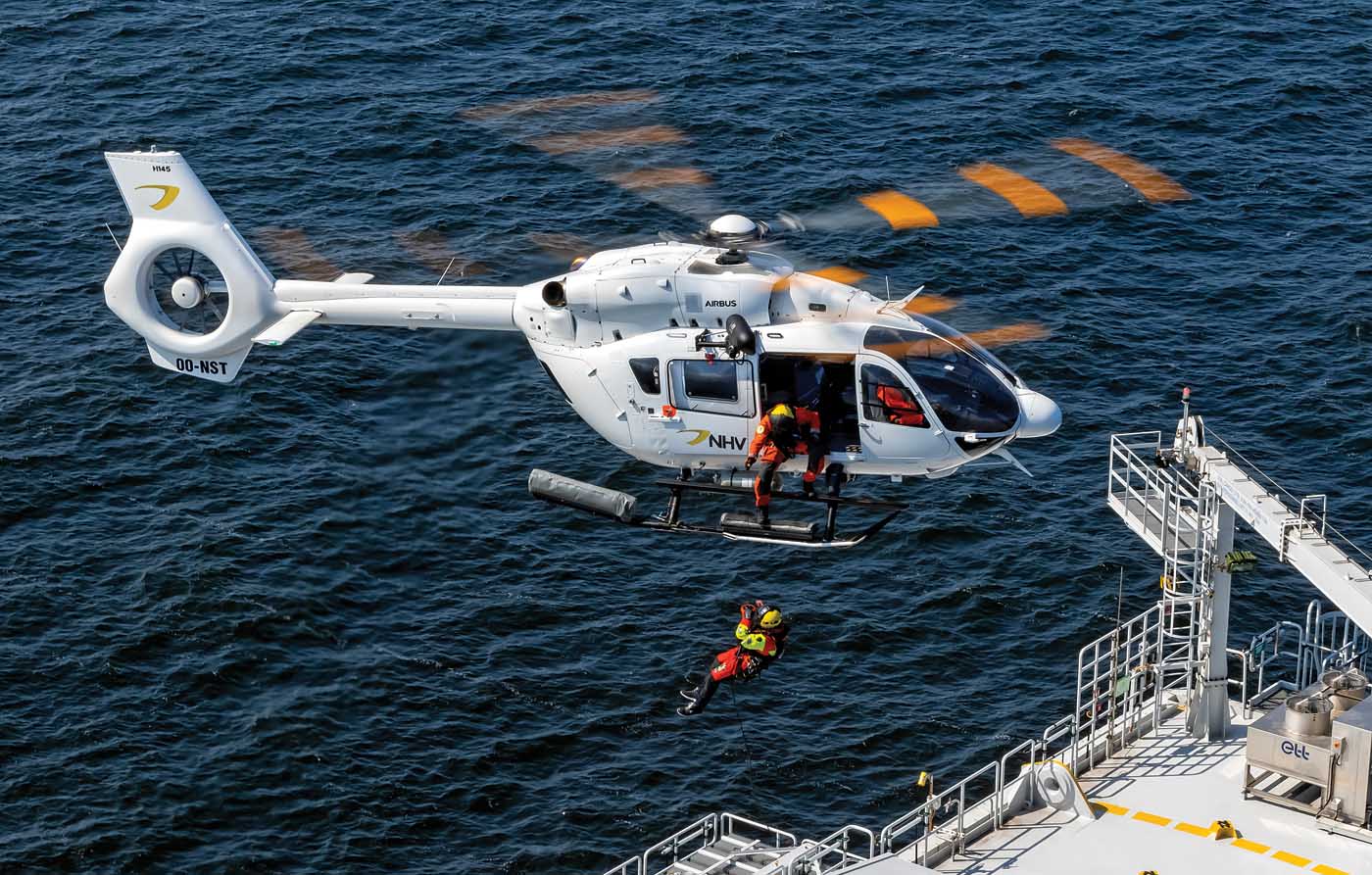
“The mainstay of our hiring is experienced people, but we’ve also been able to bring on some inexperienced pilots that have just got their CPL(H), got their IR and they’ve no experience,” he said.
NHV has its own ATO to deliver type ratings and line training, but copilots arriving without the requisite hours each have to be approved by the IOGP on a case-by-case basis. This must add cost to the company, but Christie explained that the value went beyond simply filling a cockpit seat and gives the company additional choice in who it hires.

“We need everyone to be able to work well together in the cockpit and in the office,” he said. “But it’s also fresh eyes; we like to see people coming in and asking why we do things a certain way, it gives us a chance to ask ourselves that.”
Rising to the challenge
The company’s team spirit has undoubtedly been tested. No sooner had the operation at Aberdeen begun in earnest, it was decided that Britain would leave the European Union, and with it the European Aviation Safety Agency.

NHV’s history is filled with examples of operating across national boundaries. For example, while its management of continuous airworthiness is U.K.-registered, the part 145 maintenance operation is Belgian. Until 2018 this was also the case for its Air Operators Certificate (AOC), but with Britain disentangling itself from the European Union, NHV decided to change the whole of the U.K. operation onto a U.K. AOC.
John explained that the planning and preparation took a year and depended not only on the talent that existed in the company, but on others that they needed to bring in.
“In the end it was a complete shutdown of the existing AOC and a fresh start over a weekend. Aircraft were deregistered on the Friday and by Monday we were ready to go,” he explained. “We found the right people to manage the process. We even managed to continue to win contracts while we were doing it.”

More recent challenges have had far broader reach. While the emergence of the coronavirus pandemic placed much of the world into lockdown, it was vital that the energy industry continued to be able to operate.
“One of the biggest challenges that we had right at the start was gaining any kind of good advice because nobody was an expert in this,” said Cooper.
While NHV needed to be able to transport symptomatic patients who didn’t meet the threshold for search-and-rescue (SAR), they nevertheless had to be transported back to the mainland. However, adherence to regulation made it difficult to protect people.
“We had a dedicated helicopter and a medic with oxygen, and I think that put us ahead of the curve initially,” Cooper said. “To start with we couldn’t get a barrier in for the crew because you needed part 21 approval to do anything, so we had a spare 175 which we put into a cargo fit, which is three seats at the front and three at the back, so at least we had some distance.”

Cooper said the company’s small, experienced, teams not only enable rapid action in a crisis, but are also critically important to winning and keeping routine business.
“The base managers look after the customers. They don’t have to go through key account managers,” he said. “The customers like it because they can come straight to someone who has an answer and they are just dealing with one person.”
The coronavirus crisis has undoubtedly injected a fresh and unwanted dose of uncertainty into an oil-and-gas market that was already suffering a downturn. While NHV’s U.K. operation doesn’t seem distracted from a job it is proud to have succeeded at as the underdog, the wider company has plenty of other experience, from SAR, helicopter emergency medical services and MRO services in Europe, to utility work in Norway. This makes diversification a possibility, in principle at least.
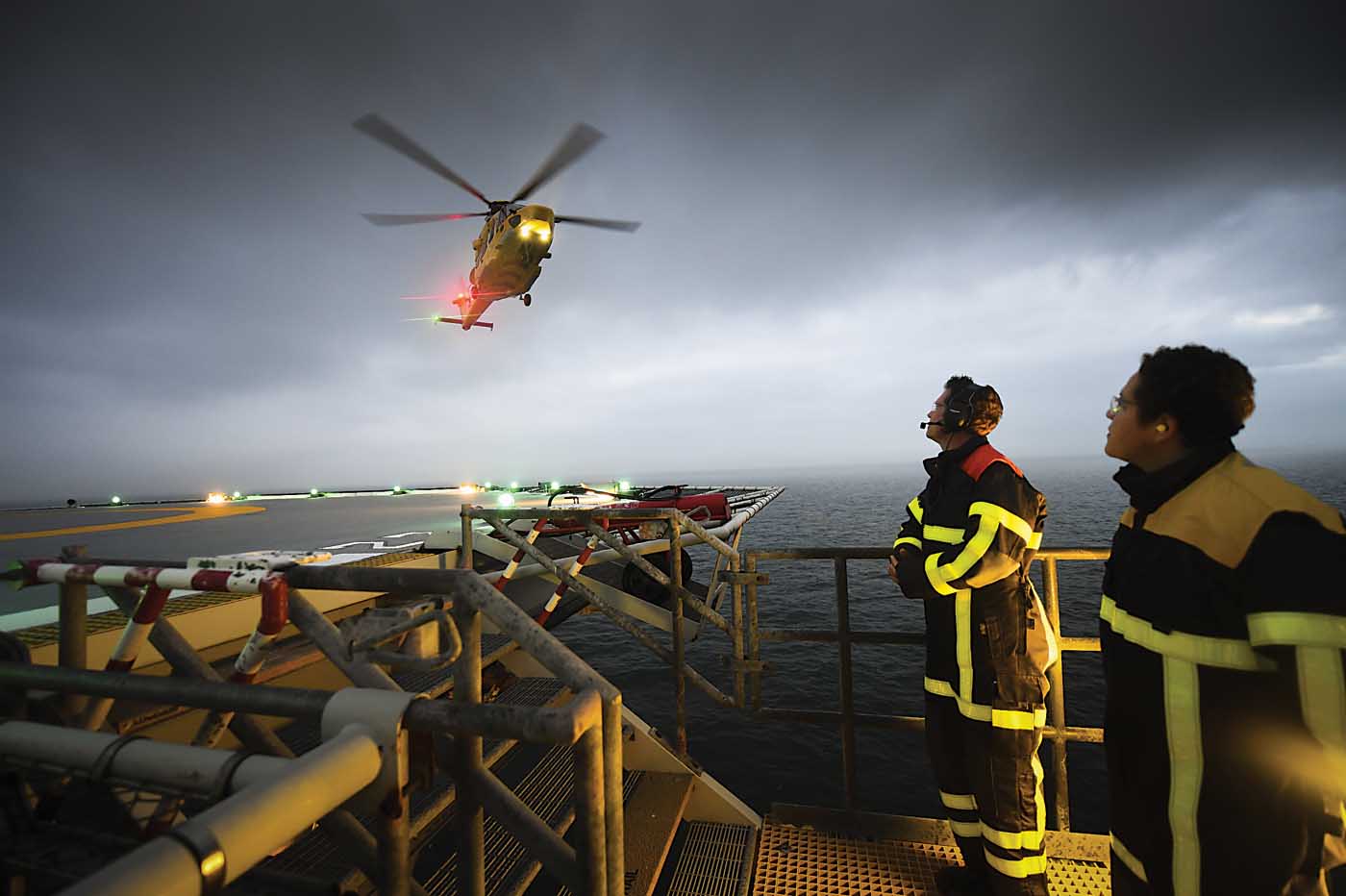
“The focus in the U.K. is on our operations supporting oil-and-gas,” said John. “We’re not shy about looking into other markets, but those markets are likely to be linked to offshore services.”
NHV has already proved that it can adapt to challenging circumstances, and it’s likely that it’ll have plenty of time to adapt further.





